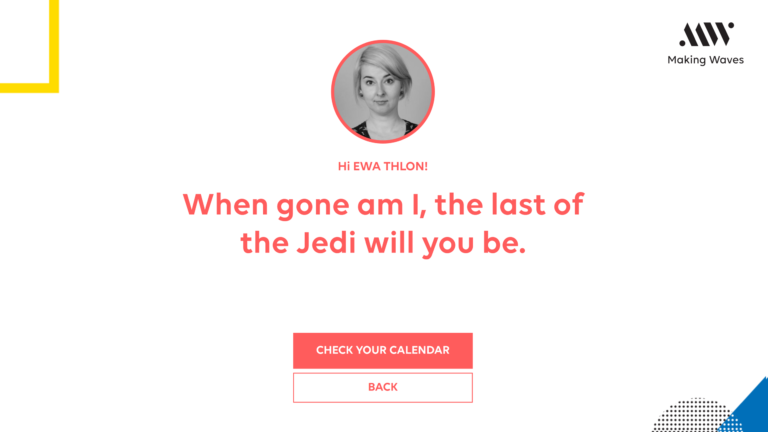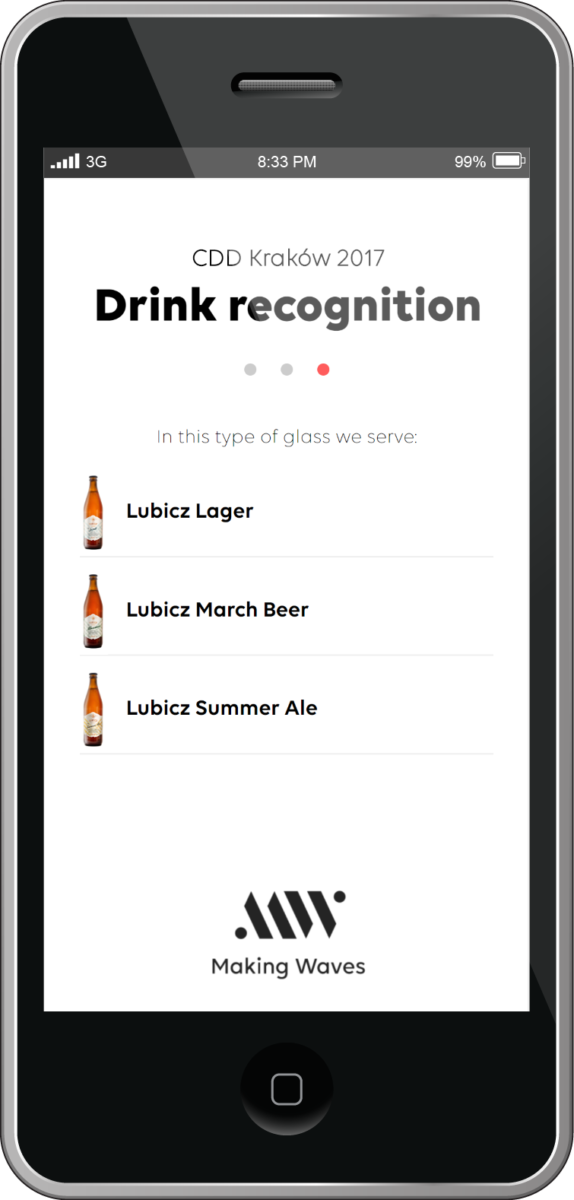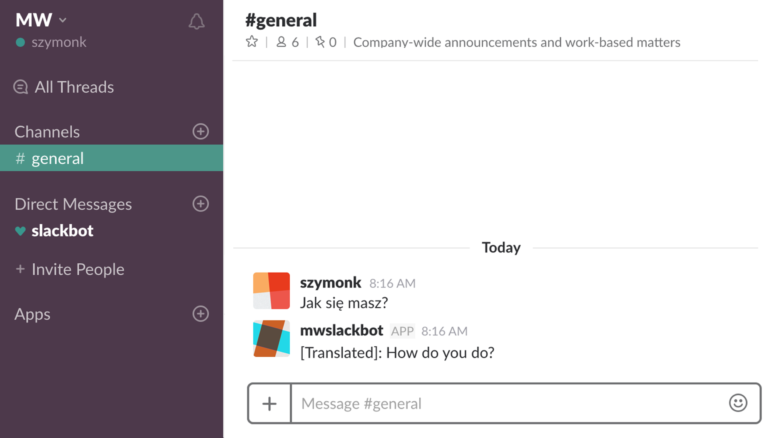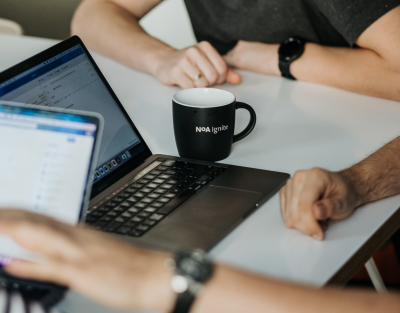Making Hackathons in Kraków – where bots, beacons and face recognition meet
January 9, 2018 / 5 min read

In NoA Ignite we believe that by using cutting edge technologies we help our customers improve their users’ experiences. We regularly organize hackathons to power up new innovations.
Krakow is a hub of talented and open minded developers, that is why it has been shortlisted by Forbes as one of the European Startup Hotspot. Nevertheless, one of the challenges we still have to face is knowledge of the newest technologies and the ability to implement them in a most effective way to support specific business processes. To achieve that, we regularly organize hackathons for our employees. Thanks to that we not only get ourselves exposed to new technologies, but also gain ideas and hacks on what to offer our clients to support their digitization needs and how to translate it into a business success.
All of our hackathons share one main goal – that is to deliver a working prototype. We tend to focus on hot IT themes such as: cognitive services, bot messages or beacons micro-location based information.
These technologies enable us to:
- personalize information based on mood and location
- welcome and guide guests into business settings
- automate communication and selling processes
- enable easier multilingual communication
- personalize settings for individuals based on their preferences
In a nutshell, these various automations can help generate extra benefits for businesses by guaranteeing that their customers and guests receive the information they need and the service they require. The smooth, personalized user experience can translate into a bigger revenue for the companies.
Below you will find more details on applications that were created during our last hackathon. All of them are successfully working prototypes.
NoA Ignite is beacons ready
Beacons are great tool for providing additional information in micro location context.
MOBILE GUIDE
A mobile application that displays relevant content, based on the current location of a device.
The application uses beacons to indicate the current device location. The beacon is a small Bluetooth radio transmitter, which repeatedly transmits a single signal to the other devices. Besides location services, beacons can also contain other sensors, such as motion, temperature, light, pressure sensors to name just a few.
The set of 6 beacons is used to create a map of the exhibition area. Based on the signal strength, the application finds the device location and highlights it on the map. Each of the additional 11 beacons is connected to a single stand. When approaching the stand, the application automatically presents the relevant content, which might be related to the presented project or interesting location in the exhibition area.
The application was implemented in Xamarin, which is a Microsoft cross-platform development software. It allows for creation with native Android, iOS, and Windows apps, using a shared code base.
Highlights:
- A mobile app displaying relevant content, based on the current device location
- 17 transmitters responsible for mapping the exhibition area and project stands
- Whenever a mobile phone appears within the transmitter range, application reacts accordingly
- Technologies: Beacons, Xamarin
MEETING POINT
A mobile application recognizing people based on personal beacon.
The business context for this application are conferences and similar events. Assuming that every participant is having his own beacon we can identify this person and display personalised content or a greeting on a screen.
The implemented Android application monitors the area to check for transmitting signals. If a beacon appears nearby its owner is recognized, and the application presents the personalized welcome message on a connected TV screen. System supports displaying multiple messages, for all people identified in the monitored area.
Highlights:
- A mobile app recognizing people based on their beacon
- Each participant is provided with a Bluetooth transmitter allowing for identification purposes
- The app welcomes people when they appear nearby
- Technologies: Beacons, Java (Android)
NoA Ignite is cognitive services ready
Cognitive services is great set of tools that can help you building more intelligent and engaging applications.
FACE RECOGNITION
An application that uses a photo to recognize a person and displays personalized content.
The implemented application uses the camera to take a user photo, and processes it to recognize the user. After a successful recognition the system presents additional content, such as a quote of a day or details of the conference agenda.
The solution uses the Face API which is a part of the Microsoft Azure Cognitive Services. It is a cloud-based service that provides algorithms to detect, identify and verify faces. The Cognitive Services use the artificial neural networks. (Artificial neural networks are computing systems inspired by the biological neural networks that try to simulate how the brain works. Such systems are trained on a provided set of examples to do certain tasks. They have been found particularly useful in areas that are difficult to express in traditional math-based computer algorithms.)
The application was implemented in Windows Presentation Foundation (WPF), which is a graphical subsystem by Microsoft for rendering user interfaces in Windows-based applications.
Highlights:
- An app that displays personalized content based on recognizing a person from their photo
- App takes a photo and identifies the user
- Quote of the day and the conference agenda are displayed for the recognized users
- Technologies: Microsoft Azure Cognitive Services, Windows Presentation Foundation
DRINK RECOGNITION
A web page that displays the kinds of liquids that can be served in the beverage container which was captured on the picture.
The implemented web page allows users to take a photo of a drinking vessels, such as coffee cups and beer glass which are being used at the specific conference venue. The system recognizes the vessel, and provides information about the currently available beverages.
The solution uses the Computer Vision API that is a part of the Microsoft Azure Cognitive Services. The API allows for rich information extraction from images to categorize and process visual data. The API provides a multitude of methods for recognizing visual content, such as analyzing the image to retrieve connected data, recognizing hand or machine written text, and many more.
The web page is hosted in Microsoft Azure, which is a cloud computing service created by Microsoft. It allows developers to build, test, deploy, and manage reliable and scalable applications and services.
Highlights:
- A web page displaying the liquids that can be served in the photographed drinking containers
- Page allows to take a photo of the tea and coffee cups or beer mugs
- Item is recognized and the information about drink served in the photographed item is displayed
- Technologies: Microsoft Azure Cognitive Services, Azure Functions, HTML5/CSS3/JavaScript
Making Waves is bots ready
Bots are great tool that can help you automate or improve communications.
LANGUAGE BOT
A slack bot that translates all messages to English in a channel for users speaking different languages.
The implemented bot helps communication in a multilingual environment. The bot checks every message in the channel where it is installed it. Users can define the main language for the channel. Each following post that is not in the defined language will be translated automatically.
The solution uses the Google Translate API and Microsoft Azure. Google Translate API allows users to recognize the language of a message and translate it. The bot currently runs on Slack, but it can be easily implemented by other chat providers.
Highlights:
- A slack bot that translates all channel’s messages that are written in an foreign language
- The bot sends a message back to the author, providing the message in the desired language
- Technologies: Microsoft Azure, Node.js, Google Translate API
NoA Ignite is all about knowledge sharing. All of our apps were presented to Client Directors from the NoA Family during Client Directors Day that took place in Fall 2017 in Krakow.
We want to make sure that we are bringing the best mix of our expertise and modern solutions to the table when working with our customers. We will be regularly organizing further hackathons. Stay tuned.
Author
Related articles
![A well-crafted prompt doesn’t just work once. It works across teams, channels, and campaigns. It can be tweaked for new use cases and refined based on what performs best.]()
June 27, 2025 / 4 min read
Prompts are marketing assets: how to reuse, and scale them
Prompts aren’t throwaway lines. They’re repeatable, scalable assets that can streamline your marketing your team’s output. Learn how to build a prompt library that delivers.
![Woman using a wheelchair in the office settings]()
June 17, 2025 / 5 min read
What is accessibility and why it matters?
Accessibility ensures everyone — including those with disabilities or limitations — can read, navigate, and engage with your content equally.








